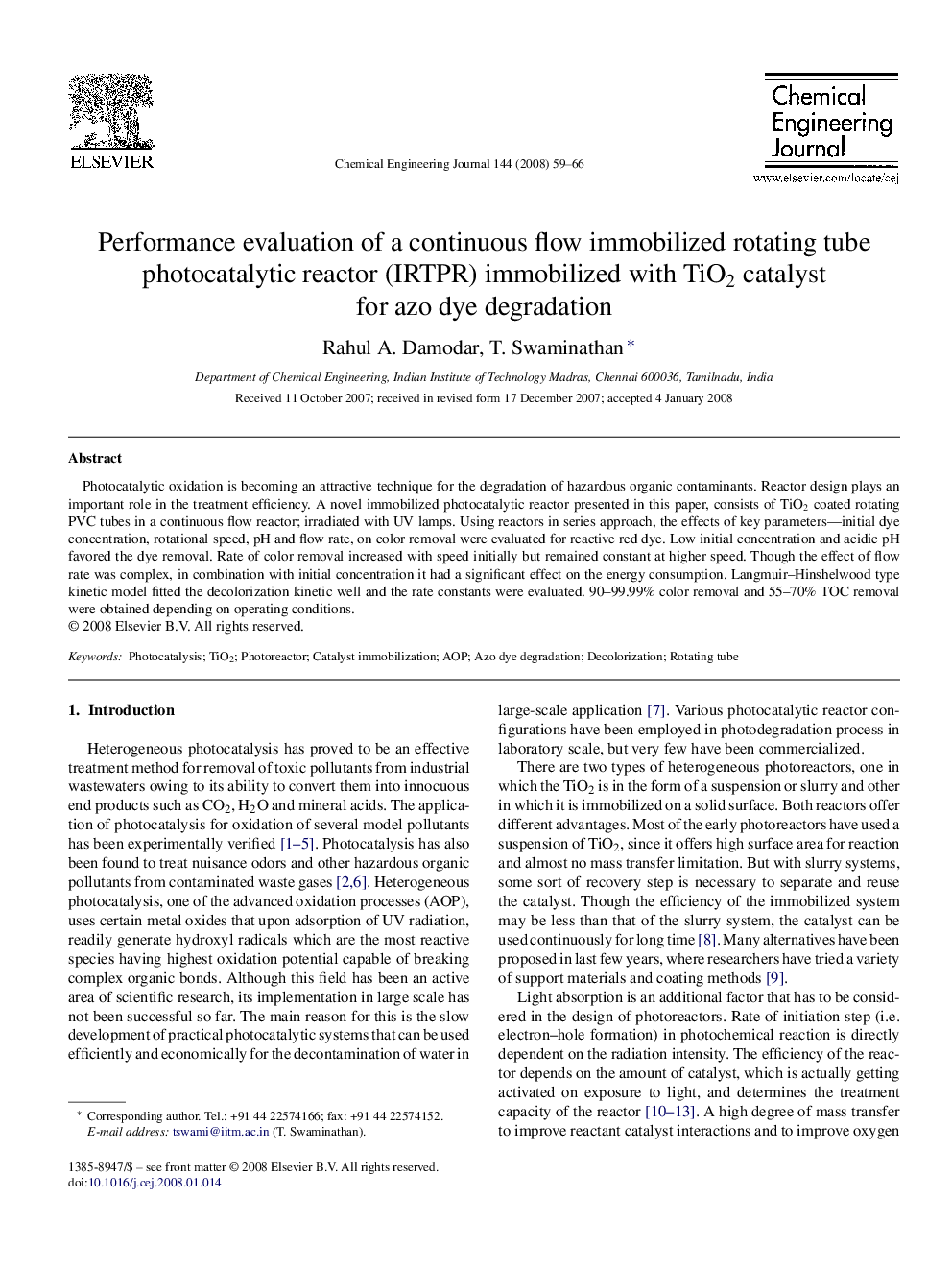| Article ID | Journal | Published Year | Pages | File Type |
|---|---|---|---|---|
| 153020 | Chemical Engineering Journal | 2008 | 8 Pages |
Photocatalytic oxidation is becoming an attractive technique for the degradation of hazardous organic contaminants. Reactor design plays an important role in the treatment efficiency. A novel immobilized photocatalytic reactor presented in this paper, consists of TiO2 coated rotating PVC tubes in a continuous flow reactor; irradiated with UV lamps. Using reactors in series approach, the effects of key parameters—initial dye concentration, rotational speed, pH and flow rate, on color removal were evaluated for reactive red dye. Low initial concentration and acidic pH favored the dye removal. Rate of color removal increased with speed initially but remained constant at higher speed. Though the effect of flow rate was complex, in combination with initial concentration it had a significant effect on the energy consumption. Langmuir–Hinshelwood type kinetic model fitted the decolorization kinetic well and the rate constants were evaluated. 90–99.99% color removal and 55–70% TOC removal were obtained depending on operating conditions.
